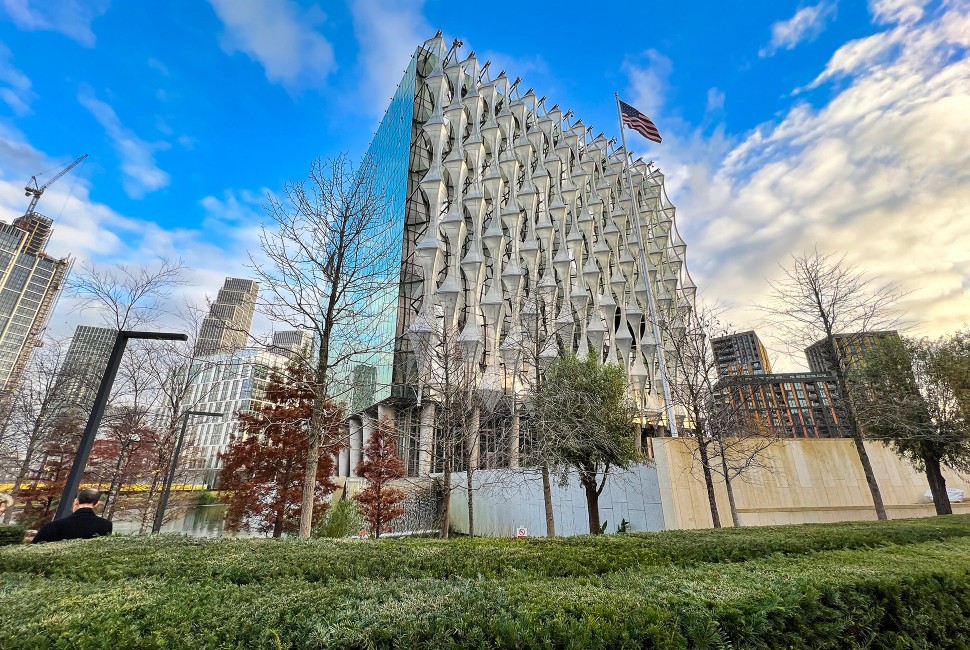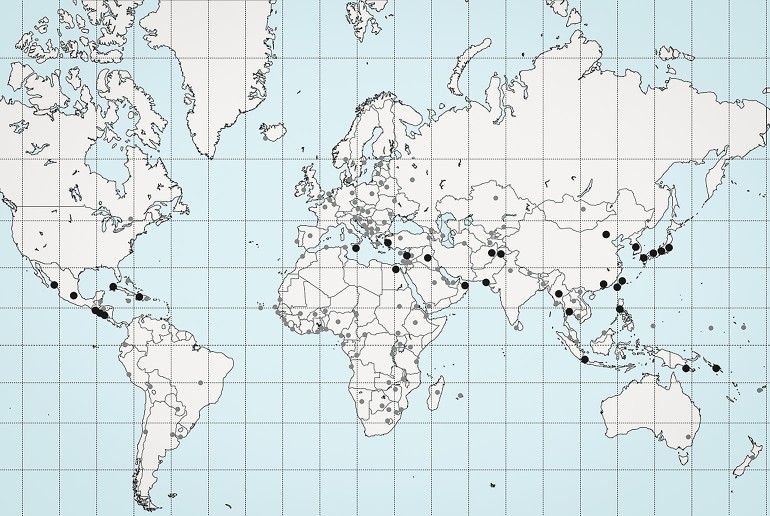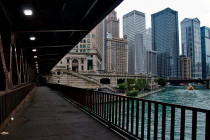U.S. embassies and consulates are designed to withstand a diverse set of dire, yet plausible, threats. These secure buildings are blast-proof, bullet-proof, fire-proof, natural disaster-proof and even gas-proof.
Now, Northwestern University experts want to make them climate-proof.
In partnership with the U.S. Department of State Bureau of Overseas Buildings Operations (OBO) and Chicago-based architecture firm Krueck Sexton Partners, Northwestern civil and environmental engineers have spent the past five years reimagining the United States’ more than 280 diplomatic locations around the globe — specifically embassies and consulates. The OBO is the single property manager for the planning, acquisition, design, construction, operations, maintenance and disposal of U.S. governmental diplomatic and consular property overseas. Diplomatic properties include embassies, consulates, office space, diplomatic housing and marine guard residences.
Climate change isn’t just a threat; it’s a threat multiplier.”
Sustainability expert
The final designs of this project ensure that these buildings remain safe, secure and functional while increasing their resilience to climate change, technological advancements, population shifts, urbanization and resource scarcity.
The project’s roadmap, “Embassy 2050,” was completed this summer. The State Department currently is determining how to implement various aspects of the project into its six-year capital plan.
“Climate change isn’t just a threat; it’s a threat multiplier,” said Northwestern’s Kimberly Gray, who co-led the project. “Extreme heat and droughts, for example, can lead to failed agricultural production and, ultimately, famine. Famine, then, foments political unrest, which can put embassies at risk. ‘Embassy 2050’ represents our vision of how the world might look in 25 years and how embassies can become a symbol of American innovation while tackling rapidly changing climate head on.”
“The State Department decided to embark on the ‘Embassy 2050’ project to proactively address the future challenges that embassies and consulates might face in the coming decades,” said the State Department’s Curtis F. Clay. “Embassy 2050 stems from the recognition that global drivers, including climate change, technological advancements and shifting worldwide demographics, are evolving threats that will significantly affect the way embassies and consulates operate. It anticipates these changes and guides the development of more resilient, sustainable and adaptive diplomatic missions. By planning ahead, the State Department can ensure that its diplomatic facilities remain effective in representing national interests, protecting personnel and promoting international cooperation, even as the global landscape continues to evolve.”
An expert on sustainability, Gray is the Roxelyn and Richard Pepper Family Chair in Civil and Environmental Engineering at Northwestern’s McCormick School of Engineering. Clay is the director of Architecture in the State Department’s Bureau of Overseas Buildings Operations.
“Few buildings and sites are more intricately integrated than an embassy compound”
With approximately 175 embassies and 90 consulates, OBO manages an extensive portfolio of diplomatic properties. These facilities are more than individual buildings. Most embassies comprise a collection of buildings on a compound, which must reconcile diverse objectives. Embassies and consulates must be secure yet welcoming, aesthetically pleasing yet functional — all while creating diplomacy with the host nation.
“Few buildings and sites are more intricately integrated than an embassy compound,” said Mark Sexton, an architect with Krueck Sexton Partners and adjunct lecturer at Northwestern Engineering. “It’s like a hospital but even more complex. Depending on its location, an embassy might have hundreds or even thousands of people working there. When designing an embassy building, you must follow many rules to ensure these people stay safe. With so many rules, it’s difficult to pinpoint small areas of opportunity, where we are free to innovate.”
If anyone is keenly aware of the various requirements involved in embassy design, it’s Sexton. Since 2013, Sexton has worked with the State Department to update and renovate embassy buildings. Each year, the Department conducts a comprehensive evaluation of its embassies, including associated warehouses, annexes, shops, housing and maintenance and support facilities. As a part of the evaluation process, staff members review data related to four key areas: facility condition, physical security, natural hazard resilience and effectiveness when conducting diplomacy.
“We use these metrics to rank OBO’s portfolio of functional facility assets that are available for potential projects,” Clay said. “Through this process, OBO evaluates multiple options to address facility deficiencies and maintenance backlogs.”




